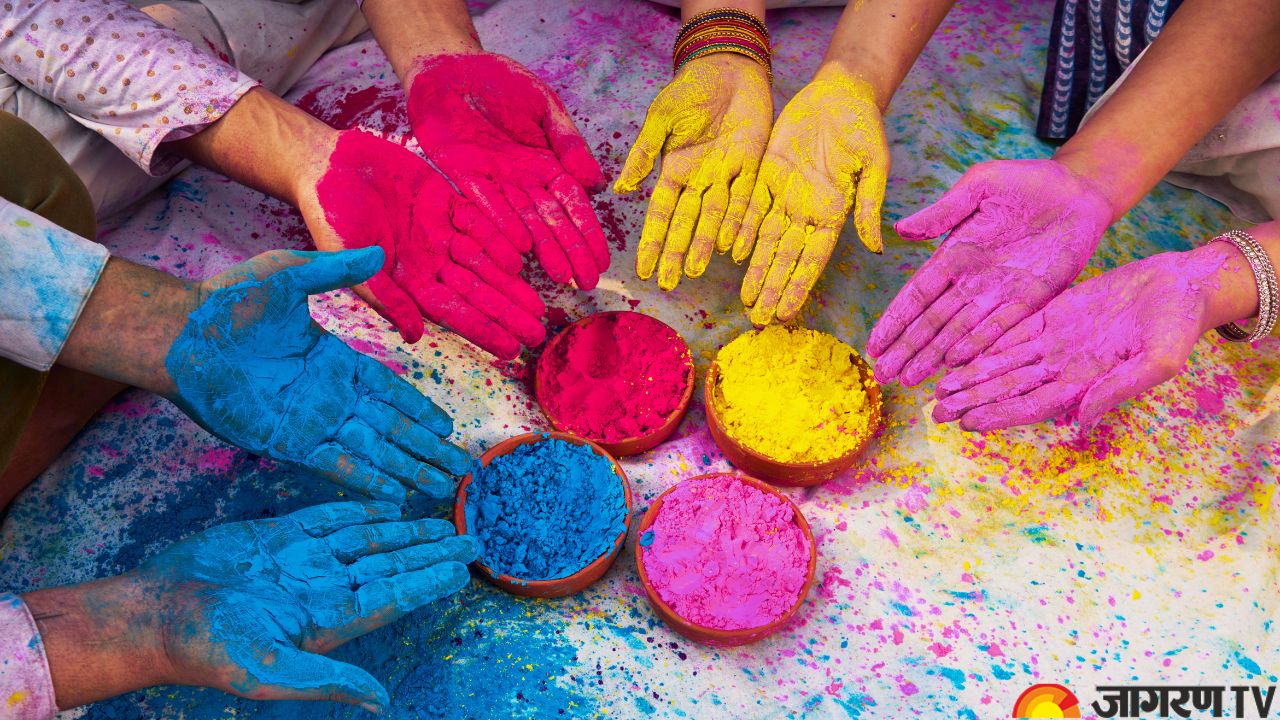Holi 2025: Easy Ways to Make Natural DIY Colours With Simple Home Ingredients

Holi 2025: Holi is one of the most anticipated festivals of India, celebrated with great enthusiasm. The joyful facade of colours, waterguns, and delicious delicacies bring people together from every corner of the country. Not only in India, but Holi is celebrated with the same spirit and energy across countries. While the festival calls for being carefree and filling each other’s faces with colours, recent skin concerns have also restricted many to avoid colours during Holi. Earlier, Holi was played with gulal, flowers and natural things, but nowadays, the store-brought colours are often made with heavy and toxic chemicals, affecting both our skin and the environment.
If you are also planning to play Holi with colours but are worried about the effects of the synthetic colours, fret not! We have curated a list of simple kitchen ingredients to make natural and chemical-free colours for a memorable and happy Holi.
DIY Holi Colours
Natural and organic holi colours are made from plant-based ingredients, herbs, flowers, and kitchen staples. These are biodegradable, non-toxic, and gentle on the skin, making them a perfect choice for festive celebrations.
Green Colour
Dry spinach leaves and grind them into fine powder. Mix it with gram flour or cornstarch to adjust the consistency and colour, and leave it for some time. You can also use henna powder to get the natural green colour.
Red Colour
Mix cornstarch with either red sandalwood, dried red hibiscus, or beetroot powder (cut and dry beetroot, and grind them into fine powder). If you don’t have cornstarch, you can also use flour.
Yellow Colour
Turmeric is the best kitchen ingredient to get a natural yellow colour. Mix turmeric powder with besan (gram flour) or cornstarch to get a bright hue. Turmeric is also good for your skin.
Orange Colour
Dry some marigold flowers and grind them to make an orange powder. You can mix it with cornstarch for smooth consistency.
Pink Colour
Dry rose petals and grind them into fine powder. Mix with cornstarch or flour to get the light pinkish and soothing hue.
Brown Colour
Combine cocoa powder and cornstarch to get light brown color.
Simple Tips to Use Colours
-
When making homemade colours, always choose ingredients that are safe, fresh, and natural.
-
Some natural colours that include fruits or flowers may not stay well at room temperature. So, if you wish to prepare them ahead of time, refrigerate them in airtight containers.
-
If you are using edible food colours, make sure they are safe to consume and have not passed their expiration dates. As much as possible, aim for natural food colours derived from fruits and vegetables.
-
Test each colour on a tiny area to ensure that it has the correct hue and consistency. Adjust the colour by adding more powder or base ingredient as needed.
-
Some dry powders can be turned into wet colours by mixing them with water. Make smaller quantities to avoid wastage and maintain freshness.
-
Before applying the colours on your skin, test them with a small patch test. Certain substances may trigger allergic reactions or rashes on sensitive skin.
-
It is best to apply oil, moisturizer, or petroleum jelly on the skin before playing Holi. This helps to protect the skin and makes it easier to remove the colour.
-
Do not leave colour on your skin for too long; wash it off before it dries. If you experience irritation, redness, or rashes, wash it off immediately.
-
Ensure the kids and youngsters use the colours safely and do not consume them.
Related videos
-
DTC Bus News: How to Apply for Saheli Smart Card? Know Process, Documents Required, and ...
-
AMT, CVT, DCT... इन सब का मतलब क्या है? जानें गियरबॉक्स के बारे ...
-
Diabetes Diet: The Rice Factor of Diabetes, What Type of Rice Alternatives are Good For ...
-
National Parents Day 2025: कैसे मनाएं राष्ट्रीय अभिभावक दिवस? जानें महत्व ...









